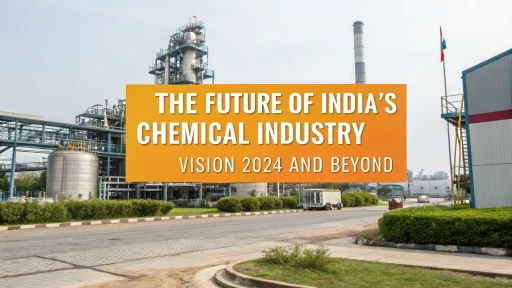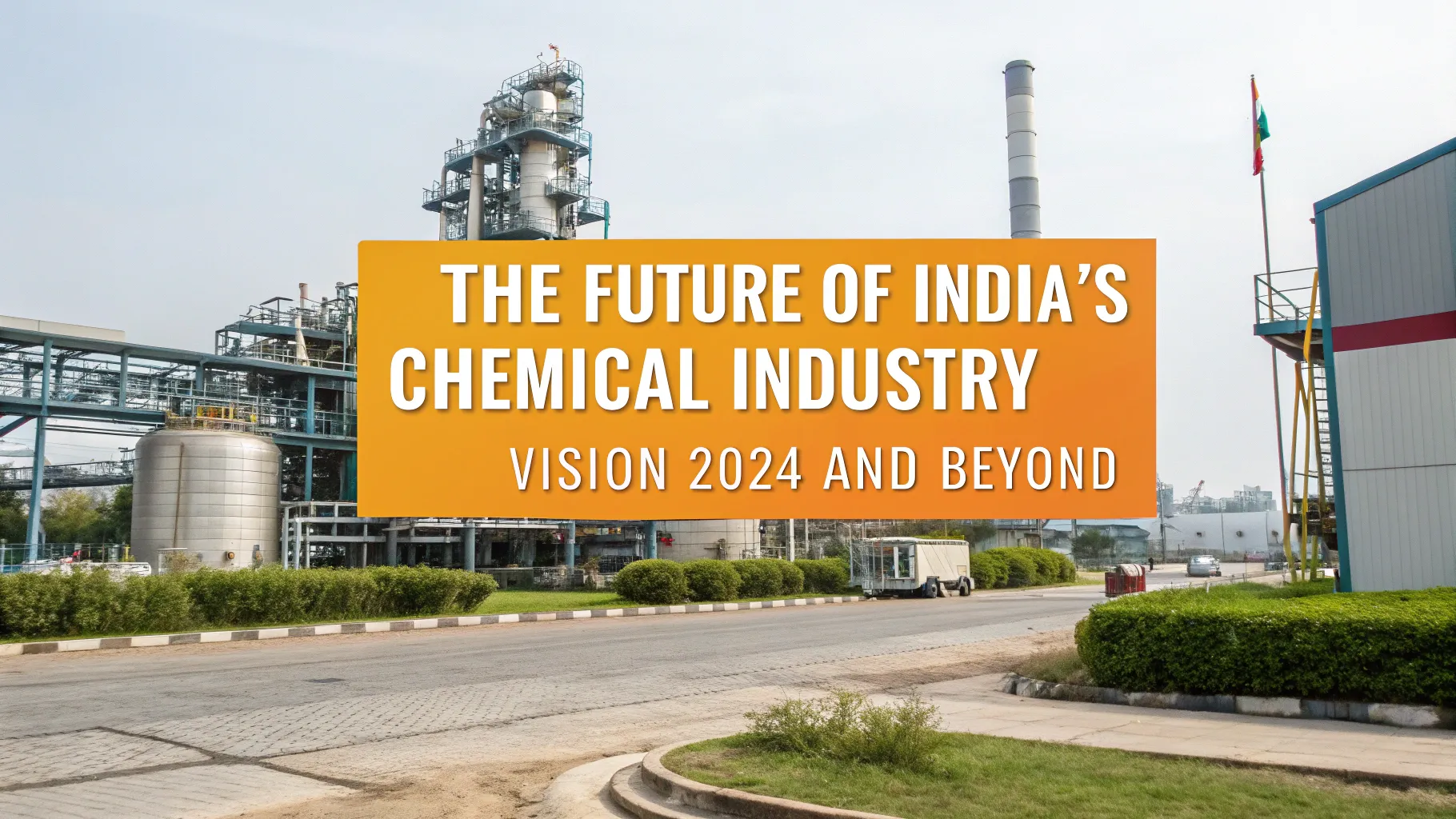At present, India’s chemical sector is at an interesting threshold, as it is ready to experience tremendous growth. It will change in the years that will follow. Relatively speaking, this sector has been a substantial component of the advancement of India. With the domestic market for over 300 industrial products. The chapter examines the Government’s Vision Statement 2024 point of view.
It means to have this Vision, as well as attention to the Strengths and Potential of the Indian Economy and Resources. To Transform India into a Global Chemicals and Petrochemicals Manufacturing Hub. The vision has identified growth, sustainability, innovation, and competitiveness as the key drivers for the industry’s future.
Key Objectives of Vision 2024
Vision 2024 presents an arsenal of objectives for the Indian chemical industry that it aspires to. It makes the country the global center for chemical manufacturing. The focus of these goals is on:
- Cutting down import dependence: Improving internal capacity for raw materials and chemicals, minimizing the need for imports.
- Attract large-scale investment: Local and foreign investments are aimed at being raised to boost the production capacity. It enhances the quality of output.
- Employing advanced innovations – The use of new-age manufacturing processes is encouraged to enhance chemical processes and efficiency.
- Creating industrial parks: Specific regions such as Petrochemical Growth/Investment Development and Plastic Parks. They are being created along with appropriate infrastructure for industries to work effectively.
- Embracing ecological balance: Adoption of environmentally friendly technology, emission control, and evolution of eco-friendly products aimed at balanced growth.
- Integrating with India’s manufacturing sector: Aims to significantly improve India’s position in the global chemicals market and increase its share.
These goals are also consistent with the Government’s overarching goal of transforming India into an Atmanirbhar, Tech-enabled, and Green Industrial Economy.
Related: How to Start a Pesticides and Insecticides (Agrochemicals) Manufacturing Business
Current Industry Overview
The Indian chemical sector is one of the most important industries in the country and consists of numerous diverse products. This includes the sector from commodity and basic chemicals to very advanced specialty chemicals and helps various industries such as agriculture, healthcare, construction, automotive, textiles, etc.
The industry generates around 80,000 commercial products that include basics like chemicals, petrochemical products, fertilizers, paint, gases, soaps, and pharmaceuticals. As of 2020-21, the chemicals and chemical products sector represented nearly 1.42 percent of the Gross Value Added (GVA) of the Indian economy and contributed about 7.98 percent to the GVA of the manufacturing sector.
As per Wazir Advisors Report – Sustainability Elements in Chemical Sector and Materials, dated 2020, the nation is one of the largest chemical producers in the world, with expectations of further increasing such stature. Supporting domestic consumption, primarily owing to agriculture, pharmaceuticals and infrastructure, is ARR’s even shaky but strong base for further escalation
Production Trends
Praxair India and Thai Airgas, a wholly owned subsidiary acquired by Praxair, first started producing industrial gases in 1988 and have continuously expanded their operations in the country. In 2022-23, thanks to additional output from the existing plants and the commissioning of a new one in Andhra Pradesh, production levels achieved a remarkable 26,570 thousand metric tons (MT), representing an increase compared to prior years. More so, between 2017-18 and 2021-22, the industry managed to grow in production by a CAGR of 4.61%.
This can also be explained due to the growing internal market, but also due to the increasing role of India in the chemical business across the world. India is becoming an attractive market for countries’ buyers to procure chemicals, as it is emerging as a quality supplier. It adhered priced market for chemicals, especially in countries like Africa and the Middle East, along with Southeast Asia
Related: Chemical Exports in 2025: Opportunities for Indian Startups
Investment and Employment Potential
The Petroleum, Chemical, and Petrochemical Investment Regions (PCPIRs) scheme represents one of the important initiatives that is expected to shape the future of the chemical industry in India. These PCPIRs are huge integrated industrial estates for people to invest in employment generation along the entire value chain of the chemical industry. It is also envisaged as part of this initiative that the Government is focusing on investments amounting to Rs. 7,63,000 crores approximately.
It is anticipated that this increase in investment will result in a significant amount of employment, with 33.83 lakh new jobs to be added. The creation of PCPIRs and Plastic Parks is expected to increase the manufacturing potential of the country while also encouraging the technological and human resource development in the chemical industry.
Related Books: – Agrochemicals, Pesticides, Insecticides, Fungicides, Herbicides, Biofertilizer, Vermicompost Manufacturing
Key Focus Areas for Vision 2024
To actualize the ambitious targets set out in Vision 2024, the chemical industry has chosen a few sector actors.
Infrastructure Development
The establishment of Plastic Parks and Petroleum, Chemical, and Petrochemical Investment Regions (PCPIRs) is the most conspicuous among the efforts to develop infrastructure. These industrial clusters are meant to create a conducive environment for setting up plants, thereby improving production efficiency, improving logistics, and also encouraging innovations by bringing together all the necessary elements and skills in one place.
Research and innovation
The chemical sector in India is aware that without innovation, it will be unable to compete effectively anywhere in the world. For this reason, the government is establishing Centers of Excellence (CoEs) in areas such as polymer technology, among others. These centers are designed to support R&D so that the industry enhances existing technologies and designs new ones to meet both the local and export market needs.
Skill Development
With the growing needs of the chemical sector, it is important to create a pool of skilled workers. The Central Institute of Petrochemicals Engineering & Technology (CIPET) helps in this task by organizing specialized courses for professionals and technicians. The skill development initiatives do not only concentrate on developing the existing labor force. But also on building up a new labor force with advanced technologies that will aid in the modernization of the industry.
Sustainability and Environmental Responsibility.
The chemical sector’s adoption of green technologies is largely on the rise. So as to manage the impact of the industry on the environment. More processes are being turned towards the production of green chemistry. Minimizing the negative impacts to the environment and sustainable modes of producing the chemistry. In this sector, the principles of a circular economy are also slowly being adopted. Where waste is curbed and more materials are recycled.
Export Promotion
In order to further escalate India’s global chemical position, the government and stakeholders. They have come up with strategies to boost exports. The cost, quality, and standards of Indian chemicals have gained popularity in overseas markets within a short period of time. Thus, it is expected that due to appropriate strategies, India will enhance its global share of chemical sales by 2024.
For more information check out this related video
Challenges and Opportunities
The Indian chemical industry is ready to expand, but not without certain obstacles:
- Raw Material Prices Exposure: The prices of raw materials such as crude oil or natural gas. They are very unpredictable, which may cause drastic changes to production costs and profits.
- Technological Changes Imperative: The global chemical landscape is transforming, and Indian players cannot afford to ignore emerging technologies.
- Social Impact: The chemical sector is largely considered by the public to cause flooding, deforestation, and production waste after use, all of which are environmental disasters. Hence, it is wise to practice responsible manufacturing.
- Fight for Markets: The chemical sector in India is overrun with enormous competitors from every corner of the globe, especially China, the US, and Europe. But that, too, creates an avenue to do something unique and valuable in such a market by producing value-added goods instead.
In spite of these setbacks, the industry is in a better position to take advantage of the opportunities for development. Speciality chemicals, which come with higher profits, and green chemistry, which is ideal for sustainable development. It presents huge opportunities to the chemical manufacturers in India. In addition, the primary policies and programs by the government. It will serve to expand the industry even more through investments and innovative activities.
Which Business to start? How to choose a business idea
Conclusion
The Chemical market in India is witnessing a robust growth curve due to favorable government policies. It increased domestic demand and sustained emphasis on innovation. Vision 2024 is an unambiguous direction for the future of the industry. It calls for the growth of infrastructure, research, human resource capacity, and sustained ecological concerns.
As the industry moves toward achieving these objectives, it is anticipated. It will contribute significantly to India’s economic development, employment generation, and competitiveness in the global market. Using its advantages, confronting challenges, and aspiring to creativity. India is almost ready to turn into a worldwide production center for chemicals and chemical-based products.







